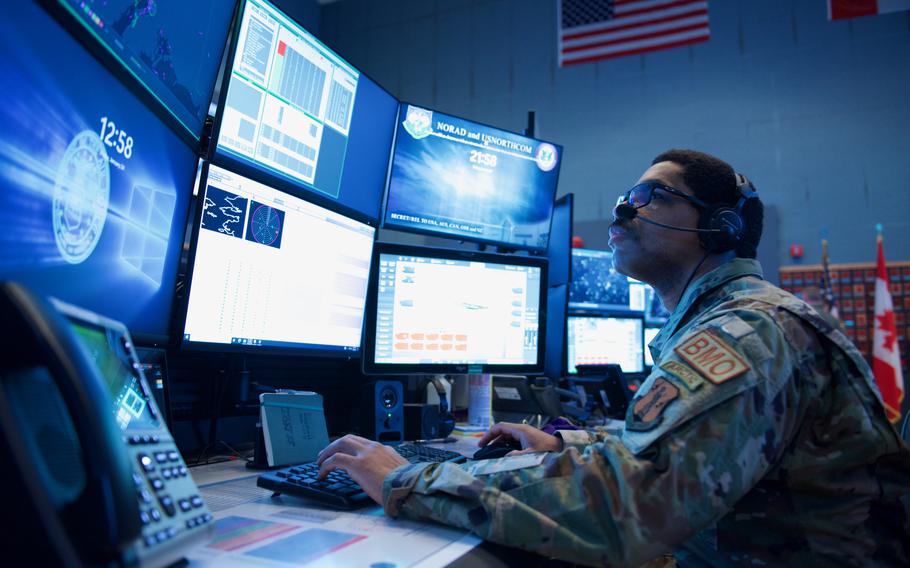
Alaska Air National Guard Senior Airman David Warren monitors Alaska airspace Jan. 24, 2024, at Joint Base Elmendord-Richardson, Alaska. (David Bedard/Alaska National Guard)
Six Russian military aircraft were tracked operating in the Alaskan Air Defense Identification Zone for about 2½ hours Monday, according to North American Aerospace Defense Command.
NORAD on Tuesday identified the Russians as two TU-95 Bear H strategic bombers, one TU-142 F/J reconnaissance and anti-submarine plane, one A-50 Mainstay early warning plane, and two Su-35 Flanker fighters, according to an email from command spokeswoman Capt. Rebecca Garand of the Canadian Armed Forces.
“This Russian activity in the Alaskan ADIZ occurs regularly and is not seen as a threat,” the command, based in Colorado Springs, Colo., said in a news release Monday.
The route flown by the Russians is classified, Garand said. But the incursion took place in the Bering Sea, which separates Siberia from Alaska, about 290 miles northeast of Shemya, a small island near the western tip of the Aleutian Island chain, according to her email.
Unlike a September incident in which a Russia fighter passed close to an American interceptor, no incidents occurred Monday between the Russian aircraft and NORAD interceptors, according to Garand.
“There were no indications of unsafe/unprofessional flying,” she said.
NORAD launched aircraft from its Alaska region, but Garand did not share information about specific aircraft and origin bases, citing operational security concerns. The U.S. bases fighter aircraft in Alaska at Eielson Air Force Base and Joint Base Elmendorf-Richardson.
Canada is part of NORAD and its air force also responds to defense zone incursions.
An air defense identification zone, or ADIZ, begins where sovereign airspace ends. While not universally recognized, it serves as a buffer area where aircraft are expected to identify themselves for national security purposes.
Russian military flights in the region have increased in recent years.
On Sept. 23, a Russian Su-35 fighter flew dangerously close to a U.S. Air Force F-16 Fighting Falcon that was shadowing a Russian bomber in the Alaskan ADIZ.
Cockpit footage from the incident showed the Su-35 passing closely along the left side of the F-16, its underside visible as it banked away.
On Sept. 14, NORAD tracked a pair of IL-38 surveillance aircraft crossing into the Alaskan zone. In July, U.S. and Canadian fighter jets intercepted two Russian bombers and two Chinese bombers about 200 miles off the coast of Alaska, then-Defense Secretary Lloyd Austin said at a July 25 press briefing.
NORAD uses a network of satellites, ground-based and airborne radar, and fighter aircraft to detect and track potential aerial threats and coordinate responses, according to the command.